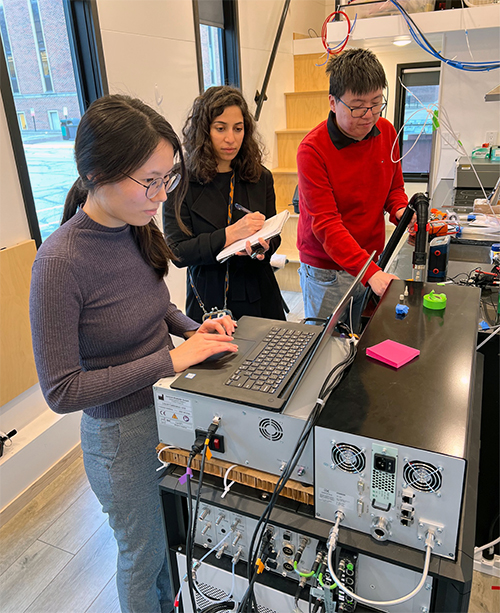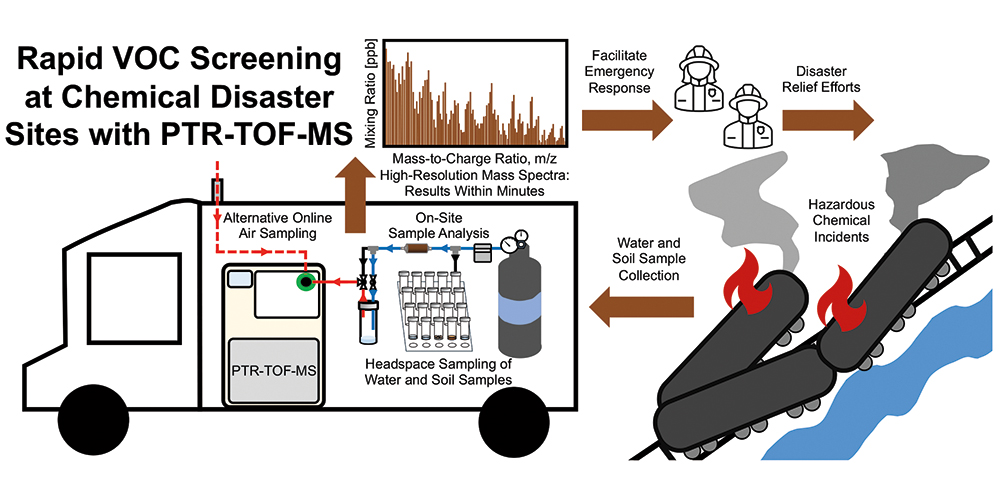Faster Solution for Spills
Cutting-edge method accelerates hazard response
When responding to a hazardous spill, every second counts — and Purdue researchers have found a way to optimally use that time.
A research team led by Nusrat Jung, an assistant professor in the Lyles School of Civil and Construction Engineering, has developed a new rapid screening method to test for volatile chemicals. This test can be used in a variety of hazardous spill scenarios to provide responders faster results when checking for chemicals in the soil, water and air.
“The most crucial time after a hazardous spill are the moments immediately following the incident,” Jung said. “Our team developed a method that could provide first responders and researchers a swift and accurate assessment so that they may form a faster plan of action to better contain the spill and protect the surrounding communities and the environment.”
In the United States, hazardous chemical incidents — including fires, explosions and chemical releases — are a common occurrence. On average, these incidents occur once every two days. Between 2004 and 2014, there were approximately 172,000 chemical spills that affected water bodies. Over the past 20 years, hundreds of thousands of chemical incidents have impacted drinking water sources.
“The increasing prevalence of hazardous chemical incidents in the United States necessitates the implementation of analytically robust, rapid and reliable screening techniques for toxicant mixture analysis to understand short- and long-term health impacts of environmental exposures,” Jung said. “In disaster situations like these, every extra second saved is invaluable.”

Nusrat Jung (center) and and PhD students Jinglin Jiang (left) and Xiaosu Ding analyze field test data.
To provide time-sensitive exposure data for emergency response, Jung’s team outlined a novel methodology for rapid characterization of chemical contamination of environmental media to support disaster response efforts. Undergraduate researcher Grayson Wittbrod contributed to the research.
“A faster, accurate response is absolutely necessary to protect both the people and the surrounding environment,” Wittbrod said. “The work being done here is just the start of what I hope is an overall improvement to hazardous material testing.”
A controlled static headspace sampling system, in conjunction with a high-resolution proton transfer reaction timeof- flight mass spectrometer, was developed to characterize volatile organic compounds (VOCs) in surface water samples collected near the East Palestine train derailment site.
“Rapid evaluation of air, water and soil contamination and human exposure risks is critical to decision-making,” Jung said. “This helps officials minimize population exposures and environmental harm. An effective and reliable approach to assess air, water and soil contamination, and subsequent human exposures, is urgently needed.”
Jung’s team utilized novel online mass spectrometry for rapid characterization of the chemical contamination of surface water samples. Specifically, proton transfer reaction timeof- flight mass spectrometry with hydronium as the reagent ion was used — a form of chemical ionization mass spectrometry that has been used for online monitoring of VOC concentrations in outdoor and indoor atmospheric environments.
Jung’s report — along with her new testing methods — will be released publicly so that future response teams can gather samples more quickly and efficiently.

Through a newly-developed rapid screening method, spill responders will be able to more quickly and precisely test for volatile chemicals. This test can be used in a number of hazardous spill scenarios to provide responders faster results when checking for volatility in the soil, water, and air.
